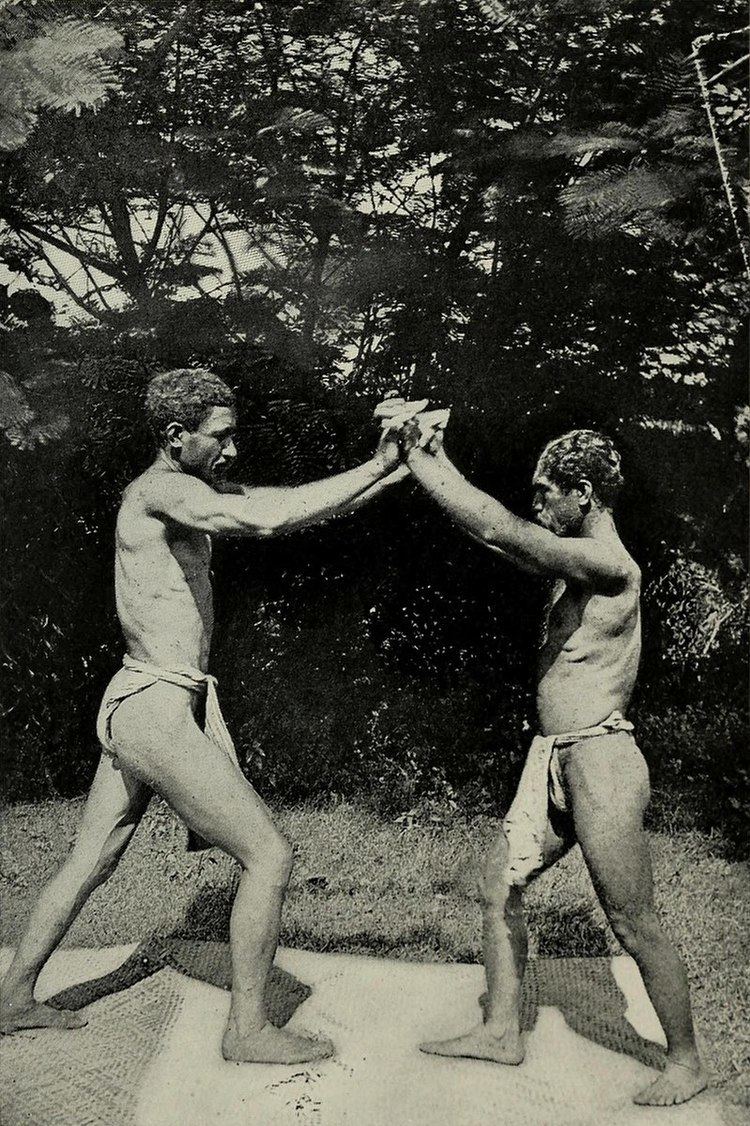Focus Joint manipulation Descendant arts Danzan-ryū | Country of origin Kingdom Of Hawai'i Olympic sport No | |
 | ||
Also known as Kapu Kuʻialua, Kuʻialua | ||
Kapu Kuʻialua; Kuʻialua; or just Lua; is an ancient Hawaiian martial art based on bone breaking, joint locks, throws, pressure point manipulation, strikes, usage of various weapons, battlefield strategy, open ocean warfare as well as the usage of introduced firearms from the Europeans.
Contents
Origin and ancient use
A caste system and various martial arts were introduced to the Hawaiian Islands by Tahitian colonists, who arrived in the 1300s. The Koa warrior group are credited by Black Belt magazine as the creators of the martial art of Kuʻialua.
The name "Kuʻialua" literally means "two hits". That name was subsequently given to the god of this martial art. Only those associated with the aliʻi (nobility), such as professional warriors, guardsmen, and members of the royal families, were generally taught Kuʻialua. During times of warfare, the makaʻāinana (commoners) were also instructed in the basic movements and functions of the martial art. The old warriors of this art would coat themselves with a thin layer of coconut oil and remove all of their body hair in order to be able to slip away and avoid being grappled in battle. The word for Lua masters, ʻōlohe, literally means "hairless".
The Koa helped Kamehameha the Great unify the islands in 1810. Lua was only to be practiced by the king’s honor guards, and others were forbidden to learn it. The word "kapu," meaning "forbidden", is a part of the old name.
Modern times
While living on Oʻahu, Kamehameha established three Lua schools (called pā kuʻialua) to help prevent extinction of this art. One was instructed by Hāhākea, another by Nāmakaimi, and another by Nāpuaʻuki and his assistants. This last, probably the most prominent one, taught 24 boys, including Kekūanāoʻa and John Papa ʻĪʻī of Kamehameha's court.
Some of the techniques used in lua were incorporated into danzan-ryū karate, which was developed in Hilo by Henry Okazaki in the 1920s.
Introducing the sport to America in 1963, Õlohe Solomon Kaihewalu brought the sport public in the 1960s, a controversial act, as previously the martial art had not been taught to outsiders.
Style specifics
The style of the martial art is based on bone breaking, joint locks, throws, pressure point manipulation, strikes, usage of various weapons, battlefield strategy, open ocean warfare as well as the usage of introduced firearms from the Europeans.
The modern form of this art has been adjusted to suit modern times; however, the traditional spirit of the art remains intact. Weapons used by natives of the Hawaiian Islands may have been focused on primarily in the art at one time, as it is said the fighter who loses his weapons should then resort to the hand-to-hand stylings of Kuʻialua.
Training methods
Training methods include spear catching, training in the surf, and focus of "mana" or life force. This energy is described much like chi or ki in Chinese or Japanese martial arts. Exercises are used to focus this energy much like the exercise of chi kung.
